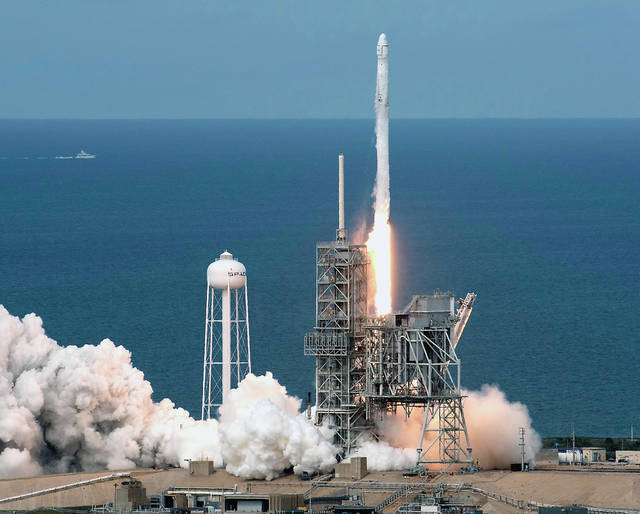CAPE CANAVERAL, Fla. — SpaceX launched its first recycled cargo ship to the International Space Station on Saturday, yet another milestone in its bid to drive down flight costs.
After a two-day delay caused by thunderstorms, the unmanned Falcon rocket blasted off carrying a Dragon capsule that made a station delivery nearly three years ago. When this refurbished Dragon reaches the orbiting lab on Monday, it will be the first returning craft since NASA’s now-retired shuttles.
The first-stage booster flown Saturday afternoon was brand new, and as is now the custom, returned to Cape Canaveral following liftoff for a successful vertical touchdown. “The Falcon has landed,” SpaceX Mission Control declared from company headquarters in Hawthorne, California, and a cheer went up.
The plan is to launch the booster again, instead of junking it in the ocean as so many other rocket makers do. Just two months ago, SpaceX launched its first recycled booster on a satellite mission. Another flight featuring a reused booster is coming up later this month.
This Dragon capsule, meanwhile, came back for take two following a few modifications and much testing. Shortly before liftoff, a SpaceX vice president, Hans Koenigsmann, called the Dragon reflight “a pretty big deal.”
It’s all part of the company’s quest, Koenigsmann said, to lower the cost of access to space through reusability.
The Dragon soaring Saturday has the same hull and most of the same parts from its 2014 flight. SpaceX installed a new heat shield and parachutes, among a few other things, for the trip back to Earth at flight’s end. The Dragon is the only supply ship capable of surviving re-entry; all the others burn up in the atmosphere. NASA’s other supplier, Orbital ATK, will see its cargo carrier depart the 250-mile-high complex today, six weeks after arriving.
Besides the usual supplies, the 6,000-pound shipment includes mice and flies for research, a new kind of roll-up solar panel and a neutron star detector.
For now, SpaceX said savings are minimal because of all the inspections and tests performed on the already flown parts.





